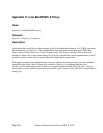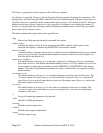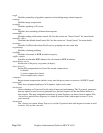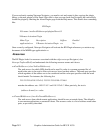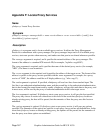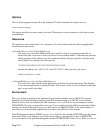Example
Here is a sample configuration file:
! proxy manager config file
!
! Each line has the format:
! managed
! or
! unmanaged
!
lbx managed /usr/bin/X11/lbxproxy -display dispName:0.0 :1
!
Proxy Manager Details
When the proxy manager gets a request from xfindproxy (or another similar client), its course of action
will depend on the <service-name> in question.
For a managed proxy service, the proxy manager will find out if any of the already running proxies for
this service can handle a new request. If not, the proxy manager will attempt to start up a new instance
of the proxy (using the <command-to-start-proxy> found in the config file). If that fails, an error will be
returned to the caller.
For an unmanaged proxy service, the proxy manager will look in the config file to find all unmanaged
proxies for this service. If there is more than one entry in the config file with the same unmanaged
<service-name>, the proxy manager will try to use the proxies in the order presented in the config file.
If none of the unmanged proxies can satisfy the request, the proxy manager will timeout for a
configurable amount of time (specified by -timeout or default of 10) and reattempt to find an unmanaged
proxy willing to satisfy the request. The number of retries can be specified by the -retries argument, or a
default of 3 will be used. If the retries fail, the proxy manager has no choice but to return an error to the
caller (since the proxy manager cannot start unmanaged proxy services).
Notes
The proxy manager listen port should be configurable.
-timeout and -retries are not implemented in proxymngr.
proxymngr does not utilize the "options" and "host" fields in the proxy management protocol
GetProxyAddr request.
Graphics Administration Guide for HP-UX 10.20
Page 165



